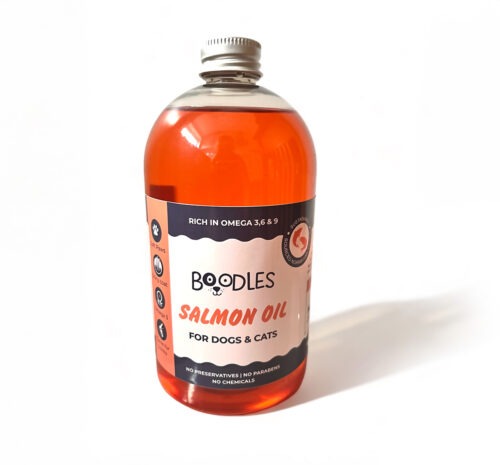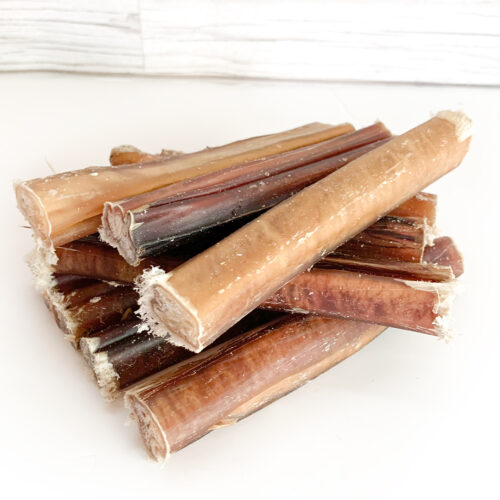Similar to many of us, dogs can also suffer from hay fever!
If your dog is sneezing and scratching more than usual, or has a runny nose or eyes, they may have been affected by allergens in their environment.
An estimated ten percent of dogs suffer from hay fever, which actually makes reasonably common in dogs, but often overlooked by owners.
Dogs with hay fever can often suffer from itching all over their bodies. Causing distress and of course they will scratch and chew at themselves to relieve the itchy feeling. This can cause their fur too thin or even create sore patches on the skin.
In addition to your poor dogs itchy skin and rashes that come with this, your dog may also develop watery eyes, a runny nose and excessive sneezing. These symptoms that are similar to the hay fever symptoms we see in ourselves are less common in our furry friends, so it’s important to look out for the itching skin problems first.
All these symptoms indicate a reaction to inhaled allergens, but remember that they can also be caused by other issues with your dog. So if you are concerned always check with your vet.
Are certain breeds more likely to develop hay fever?
Any dog can develop hay fever, however, some breeds are more likely to suffer from it than others. Below are just a few breeds that seem to suffer more than others.
Irish setters
Small terriers (especially West Highland White Terrier)
Poodles
Schnauzers
Boxers
Golden Retrievers
Shar-Pei
As in humans hay fever is a seasonal allergy, with the greatest reaction in the spring through to summer.
If you suffer from hay fever and you begin to feel symptoms it’s reasonable to expect to see your dog developing their symptoms around the same time. Usually when temperatures drop in the autumn and we have out 1st frost, the hay fever symptoms should subside for you and your dog. If your dog still has itching and other symptoms then they could be due to another problem, so definitely seek the advice of your vet.
While your dog can develop hay fever at any point in their life, they are most likely to first experience symptoms from one to three years old.
When it comes to diagnosing hay fever in dogs, it can difficult to determine what allergen is causing the problem. While blood tests are available for dogs, they aren’t always the most reliable method to diagnose hay fever. Skin testing is another method, that typically produces more accurate results.
The skin testing works by injecting suspect allergens into the shaved skin of a sedated dog. Positive reactions will show signs of swelling and irritated skin within 15 minutes of the injection, while negative reactions will simply disappear.
Dogs can react to one or more of the multiple allergens injected, which will give you an idea of what your canine is allergic to. Despite knowing this information, it can be almost impossible to eliminate exposure to your dog in certain circumstances. For instance, if your dog is allergic to dust in your house, it will simple be impossible to completely control this. This is because your dog’s fur is a magnet that attracts all kinds of environmental allergens. With this in mind as you can imagine these tests aren’t carried out unless needed as no one likes to sedate a furry friend unless 100% necessary!
How Do I Treat Dog Hay Fever?
Completely eliminating environmental allergens is an impossible task, especially seeing as dogs are usually indoor and outdoor pets. It’s pretty much impossible to eliminate all dust or pollen from your home and unlikely that you are going to hoover the garden. However, you can reduce indoor exposure to allergens with a few easy (ish) tasks.
Give Your Dog a Bath
This can be easy, if your dog happens to enjoy a bath or if your furry friend is of a size that can easily fit in your bath. With larger dogs and less docile pets bath time can be a bit of a struggle.
Evie doesn’t love a bath, but she’s so laid back that she simply puts up with it & she adores the fuss and attention of a brush and hair dry afterwards.
Washing your dog regularly will reduce their exposure to allergens and will help with scratching problems as long as you use a suitable shampoo or simply bathe your dog with plain cool water. If you like to use a shampoo perhaps try an oatmeal based one that is specifically designed to soothe your dog’s itchy skin. After your dog has finished playing outside, rinse their paws to reduce pad exposure to allergens.
Epsom Salt Bath
Soaking your dog’s paws in a bath of water and Epsom salt is a great way to relieve itchy skin. Make sure you completely rinse their paws with plain water before letting them out of the bath. This is because they could develop diarrhoea if they lick their paws with Epsom salt still on them.
Use Marigold Flower as it is incredibly soothing for skin that us irritated and itchy. It can be found at most health food or supplement stores and online. The marigold flower can be diluted with water and poured into a spray bottle so it can easily be applied to you dogs irritated skin as often as needed to help their discomfort.
Remember to regularly wash your dog’s bedding with hot water. This will help to reduce the number of allergens that can be deposited there.
If you have wooden or laminate flooring avoid sweeping the floor with a brush as this tends to move allergens from one place to another, rather than capturing them. Try to hoover all floors this can avoid settled allergen becoming air born.
For some dogs it may be beneficial to add to their diets to try & improve their immune system, and to promote healthy skin and fur. Fatty acids are essential for your dog’s skin and appear to reduce the irritated skin that they get from hay fever.
Omega 3 is an important fatty acid for skin health and it can have anti-itching properties.
Fish and fish skins are great to give your dog they are low in fat and rich in Omega 3.
If your furry friend has long hair, it can be beneficial to trim it. This will reduce the amount of pollen and allergens that will get trapped by your dog’s coat. Give your dog’s coat a quick wipe down after each trip outside, just with a damp towel or cloth. This will remove at least some of the allergens as you can’t bathe them every time they nip out for a wee!
If your dog is unfortunate enough to suffer very badly from hay fever then do think about keeping them indoors when the pllen levels are really high. You certainly wouldn’t want to restrict your dog to inside of your home over the hay fever months, but it can be beneficial to keep them indoors when the pollen count is very high. Windy days when pollen counts are high are especially bad, as the pollen particles can be dispersed over a wide area.
Keeping your dog away from longer grass and vegetation is also another great way to reduce their exposure to pollen particles.










